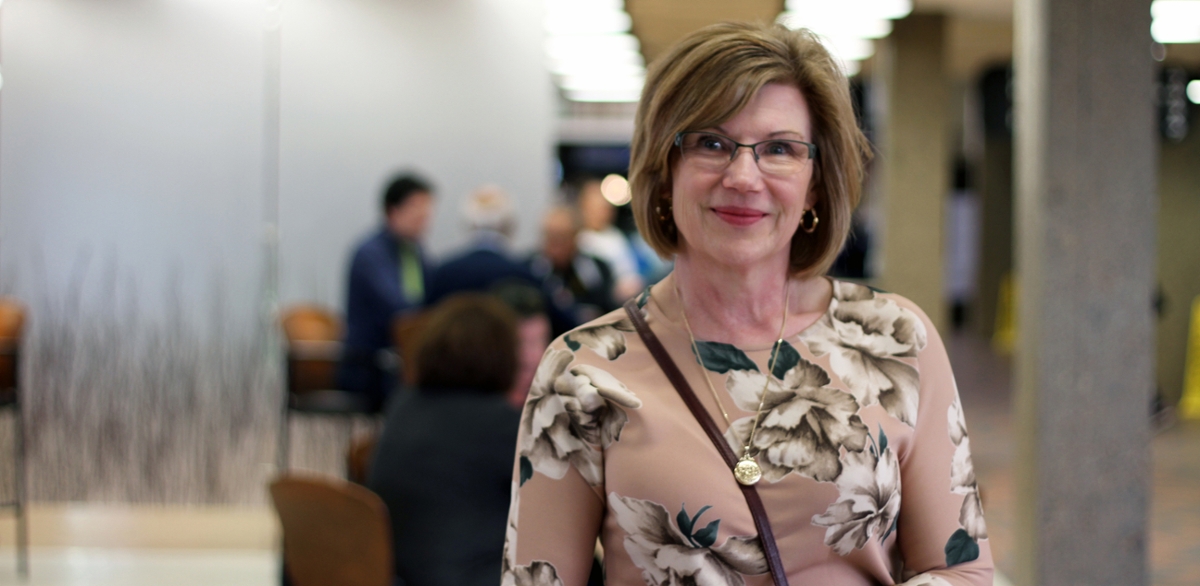
Examining elderly bullying
Dr. Goodridge and her team have been looking into the prevalence of peer-to-peer bullying in seniors' communities in Saskatoon
By Marg SheridanMen and women who were once mobile, busy and hard-working often find themselves contained by the physical limitations of their aging bodies, a consequence of growing old.
But for some, an old problem returns again as they wind up facing down an opponent they hadn’t contemplated in years: the bully.
“This is like bullying occurring in your own home,” said Donna Goodridge, a professor in the Department of Respirology, Critical Care and Sleep Medicine at the University of Saskatchewan’s College of Medicine. “And you may not have any kind of supports because there are (minimal) supports offered in the apartment itself.”
Which means there’s almost nowhere to hide.
The research being done in Saskatoon is revealing that incidences of peer-to-peer bullying in seniors’ communities is prevalent. Bullies are making fun of weight, clothing and appearances, and even mocking the use of physical aides like walking sticks, in the unavoidable common areas in the residences.
In her study, Goodridge and her team found that 39 per cent of respondents admitted to having seen a peer bullied within the past year, with nearly a third confirming that they were personally bullied. And those seniors who had been bullied were self-reporting the same health and mental-health symptoms that their youth counterparts were, with responses ranging from added stress and a sense of embarrassment, to a loss of sleep and sense of worry.
The difference, Goodridge explained, is that there are well-established programs to help try to curb youth bullying and, in a lot of cases, a bullied youth is more physically able to extricate themselves from the situation because they’re more mobile. For bullied seniors, they often have no way of avoiding their tormentors because they either have nowhere to go, or don’t have the mobility to leave.
And with a number of seniors fearful to leave their own homes, they start to become susceptible to perceived loneliness or, more worryingly, social isolation.
“Their home is (a) haven,” Goodridge continued. “When they’re not able to get to their doctors’ appointments because they’re worried that they might be bullied, they become scared to come out of their apartments and become socially isolated. And social isolation causes all kinds of problems, like premature institutionalization, because they can’t support themselves.”
It’s an issue that Goodridge expects will only get worse, as Canada’s senior population continues to grow. That increase in the number of seniors who will move into retirement complexes could lead to more bullying as residents who may never have had to live in an apartment-style community are forced to adapt to new social standards.
“The number of seniors is going to continue to increase hugely in the coming years,” she stressed. “This is something that we need to take a really proactive approach to and create those respectful environments where people do feel safe.”
Outside of designing retirement communities with an understanding that this is an issue, Goodridge recommends we adapt the anti-bullying strategies that are well established for Canadian youth. Visual reminders, like campaign posters and flyers, encourage respectful environments by stressing that bullying is not acceptable and bring the issue front-and-centre. Creating community rules and standards that broadly define what behaviour is considered to be bullying can also have an immediate impact.
Several retirement communities in Manitoba have taken steps to encourage mindfulness and self-care by hosting workshops that help residents deal with issues that they do not always have control over. Goodridge and the Saskatoon Council on Aging are currently working with Youville Centre in Winnipeg to develop a common strategy that combines a focus on creating respectful environments, along with developing a mindful approach to living.
“Engaging seniors, hearing about what other things they want to do, is really critical,” Goodridge said. “Because as outsiders we can come in and say, ‘This is the answer to your problem.’ But we really need to hear it from (them).”
